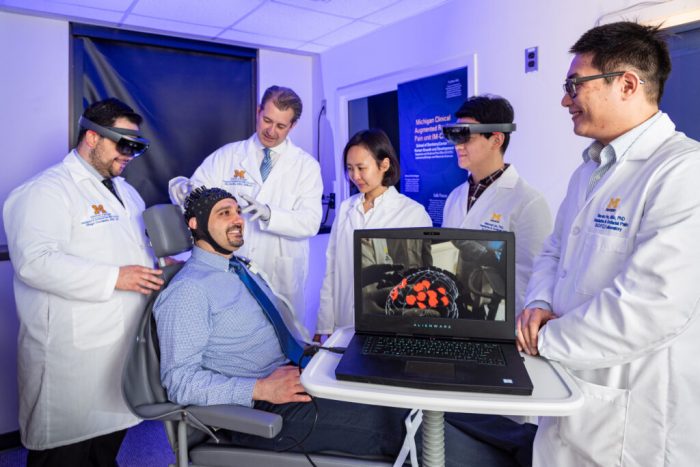
Many patients, especially those who are anesthetized or emotionally challenged, cannot communicate precisely about their pain. So U-M researchers have developed a technology to help clinicians “see” and map patient pain in real-time, through special augmented reality glasses.
The portable platform combines visualization with brain data using neuroimaging to navigate through a patient’s brain while they’re in the chair. They tested the technology on 21 volunteer dental patients, however it is years away from widespread use in a clinical setting.
“It’s very hard for us to measure and express our pain, including its expectation and associated anxiety,” said Alex DaSilva, associate professor at the School of Dentistry and director of the Headache and Orofacial Pain Effort Lab. “Right now, we have a one to 10 rating system, but that’s far from a reliable and objective pain measurement.”
